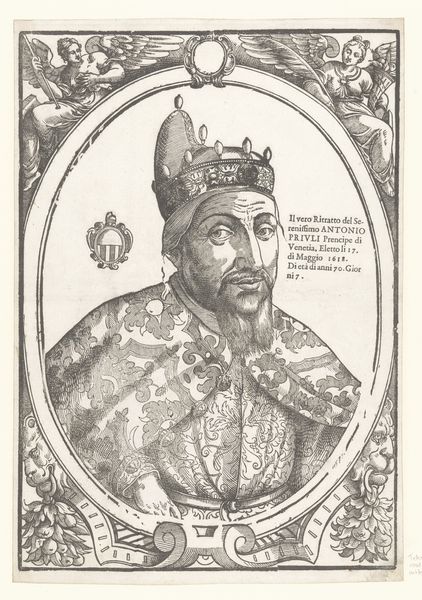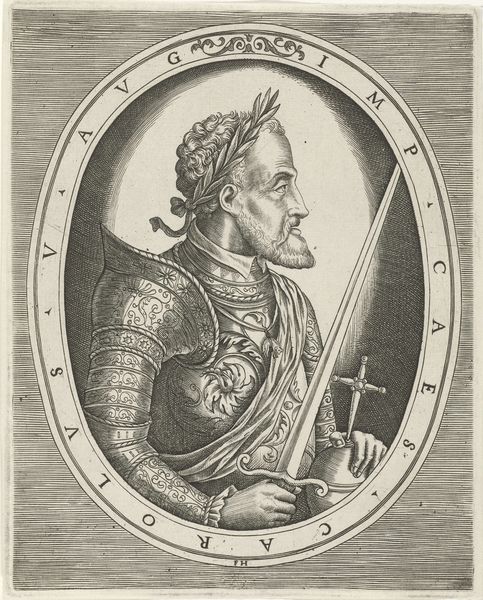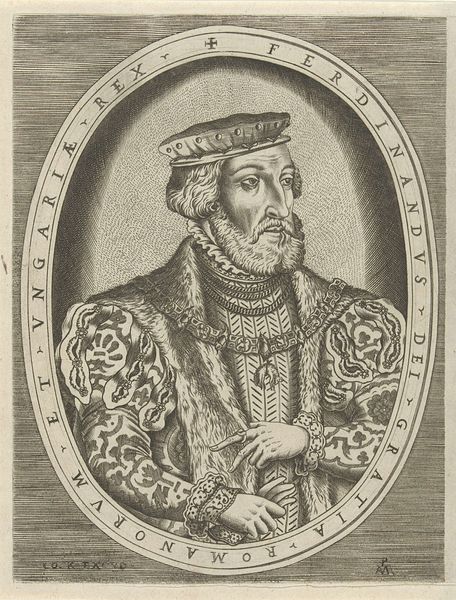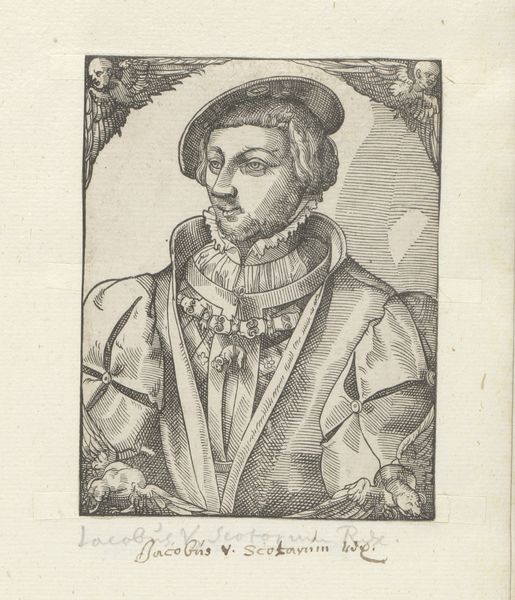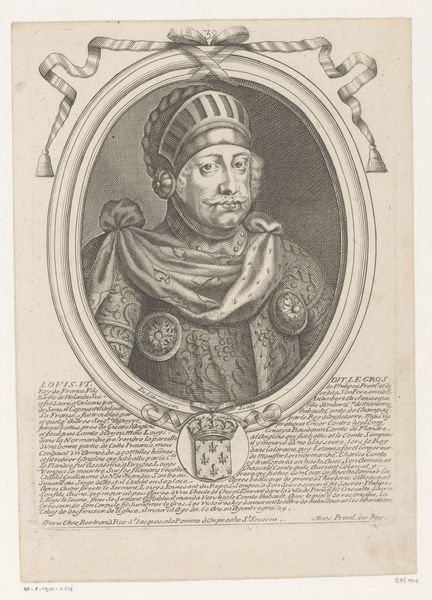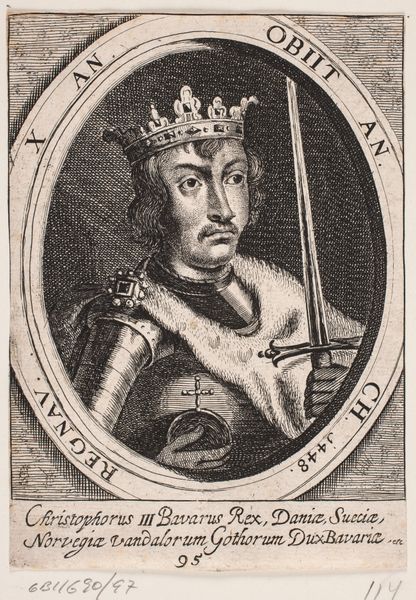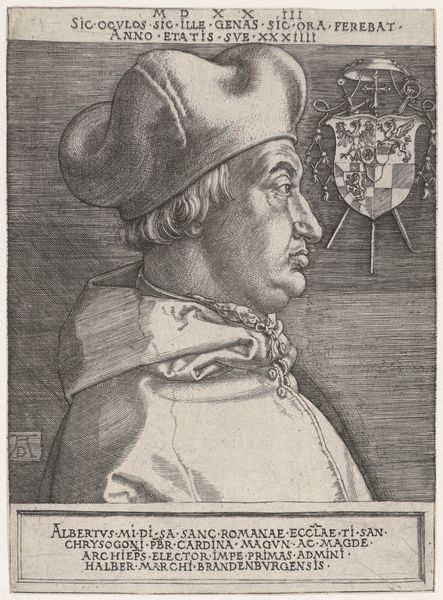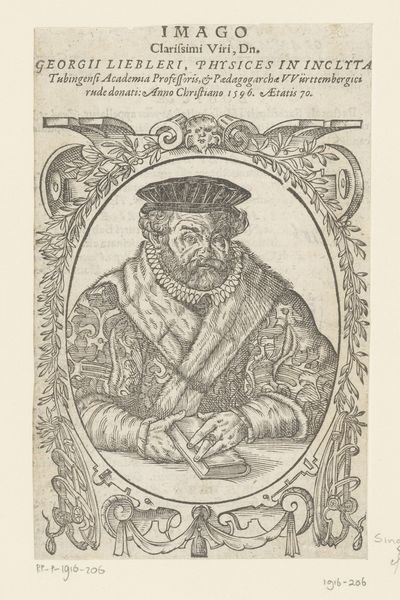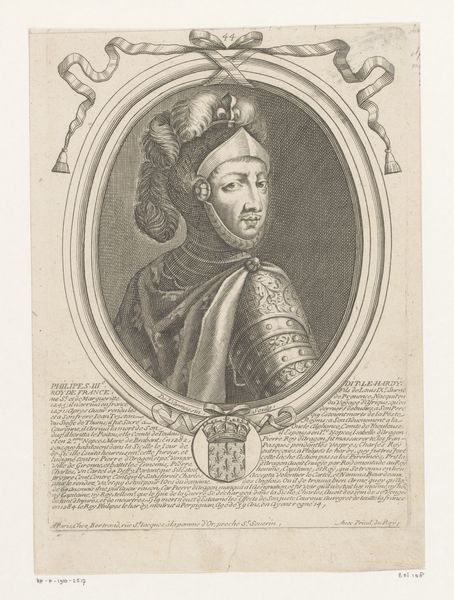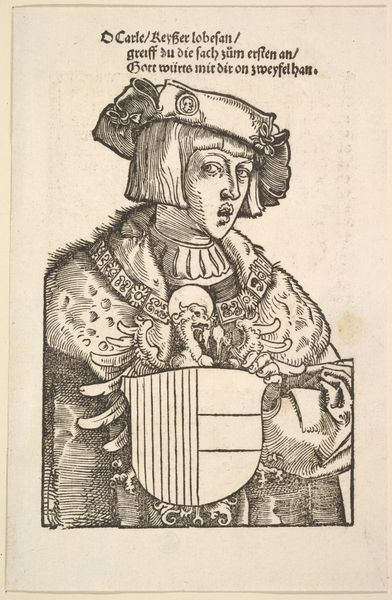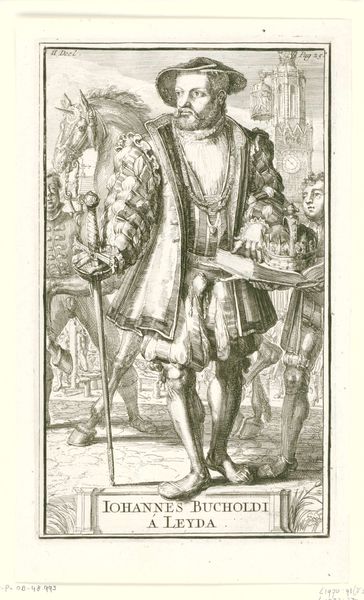
print, engraving
#
portrait
# print
#
old engraving style
#
caricature
#
11_renaissance
#
history-painting
#
engraving
Dimensions: height 428 mm, width 293 mm
Copyright: Rijks Museum: Open Domain
Editor: This is an engraving from around 1547, titled "Portret van Hendrik II, koning van Frankrijk," which translates to "Portrait of Henry II, King of France." It's anonymous and held at the Rijksmuseum. The level of detail is striking for a print. How do you interpret this work and its symbolism? Curator: The symbols woven into this image tell us a great deal about the construction of power and identity. Consider the fleur-de-lis; not just a decorative element, it signifies French royalty and divine right. Its presence echoes across centuries of French heraldry, linking Henry to a lineage and a political destiny. It sits above the hand and in his scepter—where else do you see it and what associations do you make with its symbolic value? Editor: I see it on his coat of arms. I guess that reinforces his claim to the throne and connects him to previous French kings? Curator: Exactly. Notice how the oval frame mimics the shape of a mirror or a coin—each alluding to ways power literally represents itself to, and through, its subject. Even the material – an engraving intended for mass reproduction – is conceptually significant: royalty mediated by the printing press and delivered for the gaze of his public. Can you think of any modern equivalent of image dissemination in visual culture today? Editor: Maybe official presidential portraits? Or how political leaders use social media? I hadn't considered how printing technology influenced how Henry wanted to be perceived. Curator: Precisely. Symbols aren't just decorations; they actively construct meaning. What at first appears simply to be a portrait transforms into something closer to state propaganda. Editor: I see the image quite differently now. I was only looking at it as a likeness before.
Comments
No comments
Be the first to comment and join the conversation on the ultimate creative platform.
